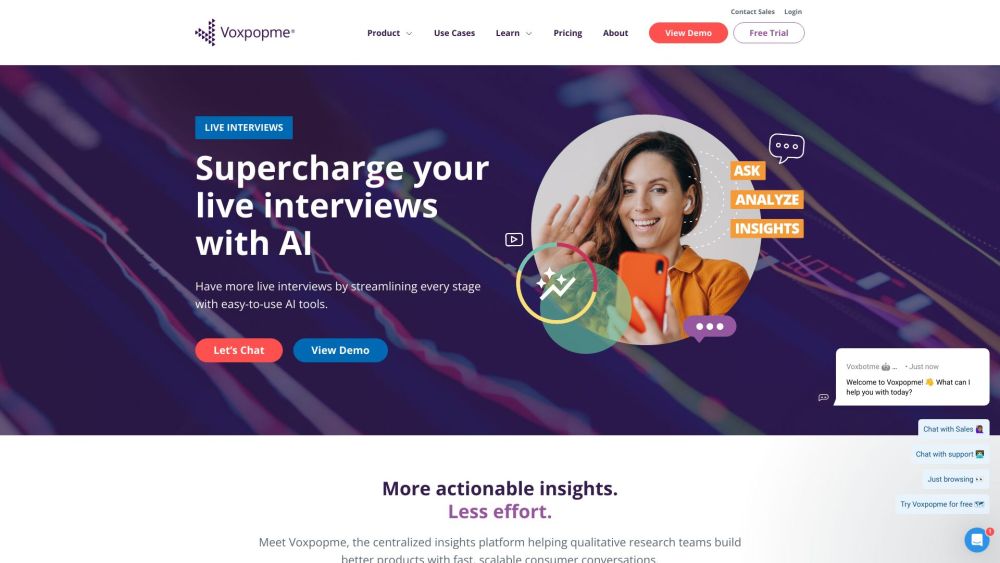The era of generative AI has arrived, driven by neural networks that generate new data, create content, and make informed decisions based on extensive training datasets.
However, the landscape of generative AI is evolving. While ChatGPT pioneered a wave of chatbot-like, text-driven interfaces, alternative approaches from companies like Hume AI and Anthropic are also making their mark.
Are You Ready for AI Agents?
Google and Microsoft have integrated generative AI into their search engines. Innovative content creation models such as Stable Diffusion, Midjourney, Runway’s Gen-3 Alphas, and Luma AI’s Dream Machine offer user-friendly interfaces that include sliders, dials, and buttons to refine AI outputs.
In generative AI user interfaces, common elements may exist, but there is no universal design standard. Effective AI models must align with specific use cases and desired outcomes.
To develop impactful generative AI applications, designers and engineers must consider the intended use case, target audience, and user inquiries about AI operations.
A panel of experts will discuss the future of AI at the VB Transform 2024 conference in San Francisco from July 9-11, 2024. Featured participants include design, engineering, and product leads from generative AI companies like OpenAI and Microsoft, as well as established firms adopting this technology, including CapitalOne, Pinterest, Slack, eBay, Zendesk, and Wayfair.
Chatbots: Simplifying User Interaction
ChatGPT by OpenAI
ChatGPT, which sparked the generative AI movement, features a streamlined interface focused on task-specific tools. Its adaptability includes summarization, planning, and productivity functions, making it a versatile assistant for various needs.
Google Bard/Gemini
Now known as Gemini, Google Bard merges powerful search capabilities with AI insights. Its modern interface enhances productivity with contextual responses, catering to both casual and professional users while ensuring swift access to precise information.
Hugging Chat by Hugging Face
Hugging Chat is designed for developers and researchers, featuring tools for AI model interaction and fine-tuning. Its modular design allows for simple integration across platforms, promoting flexibility and personalization.
Claude by Anthropic
Claude's interface is tailored for technical users, offering coding and development tools. A recent addition, the "Artifacts" feature, enables users to compile code and run full programs alongside their chat interactions.
Microsoft Copilot
Embedded within the Office suite, Microsoft Copilot provides contextual AI assistance that enhances workflow without disruptions. Users benefit from automation tools designed to improve productivity within familiar applications.
Pi by Inflection AI
Pi is a conversational AI agent that prioritizes personal assistance and quick information retrieval. Its straightforward interface focuses on text interactions, making it an efficient tool for daily tasks.
Hume AI
Hume AI features the Empathic Voice Interface (EVI), a pioneering conversational AI with emotional intelligence. Utilizing voice interactions, it analyzes vocal nuances to understand and convey emotions, enhancing user engagement naturally. Its public demos display real-time emotional analysis, making it ideal for nuanced customer support and collaborative environments.
AI in Search and Research Tools
NinjaTech
NinjaTech offers an efficient interface for academic and professional research, including advanced querying and data analysis tools. Designed for clarity and effectiveness, it supports extensive data visualization suitable for in-depth studies.
Perplexity AI
Combining search engine functionality with AI-driven insights, Perplexity AI delivers concise answers with a minimalist design. Its multimedia search capabilities enhance research tasks, simplifying complex inquiries.
Content Creation Tools
Luma AI’s Dream Machine
Dream Machine focuses on visual creativity, offering intuitive tools for text-to-video and image-to-video generation. Its user-friendly interface allows creative professionals to produce and edit content efficiently.
MidJourney
MidJourney provides extensive customization options for image generation. Users can easily manipulate stylization and variety through intuitive sliders, enabling precise creative expression.
Suno AI
Suno AI specializes in music creation, offering a simple interface for generating songs based on user prompts. It caters to various musical expertise levels with features that emphasize creativity and accessibility.
Integrated AI Features
Apple Intelligence in iOS 18
Apple’s AI tools in iOS 18 enhance writing and personalization, allowing users to generate text and customize messages seamlessly. Its simple interface integrates AI into everyday tasks.
Meta AI
Based on the open-source Llama chatbot, Meta AI combines social media dynamics with AI interactions. Its visually appealing platform fosters community engagement and allows users to generate and share AI-driven content easily.
Conclusion
These generative AI services illustrate the wide range of interfaces tailored for diverse user needs, spanning conversational chatbots, advanced research tools, and creatively intelligent interactions. Each service enhances user experience, productivity, and creativity.
As we observe the varied interfaces available, it’s evident that the future of generative AI depends on thoughtful design and user experience. The VB Transform 2024 conference will further explore these themes, showcasing cross-functional teamwork in shaping the future of AI applications. We look forward to your participation!






